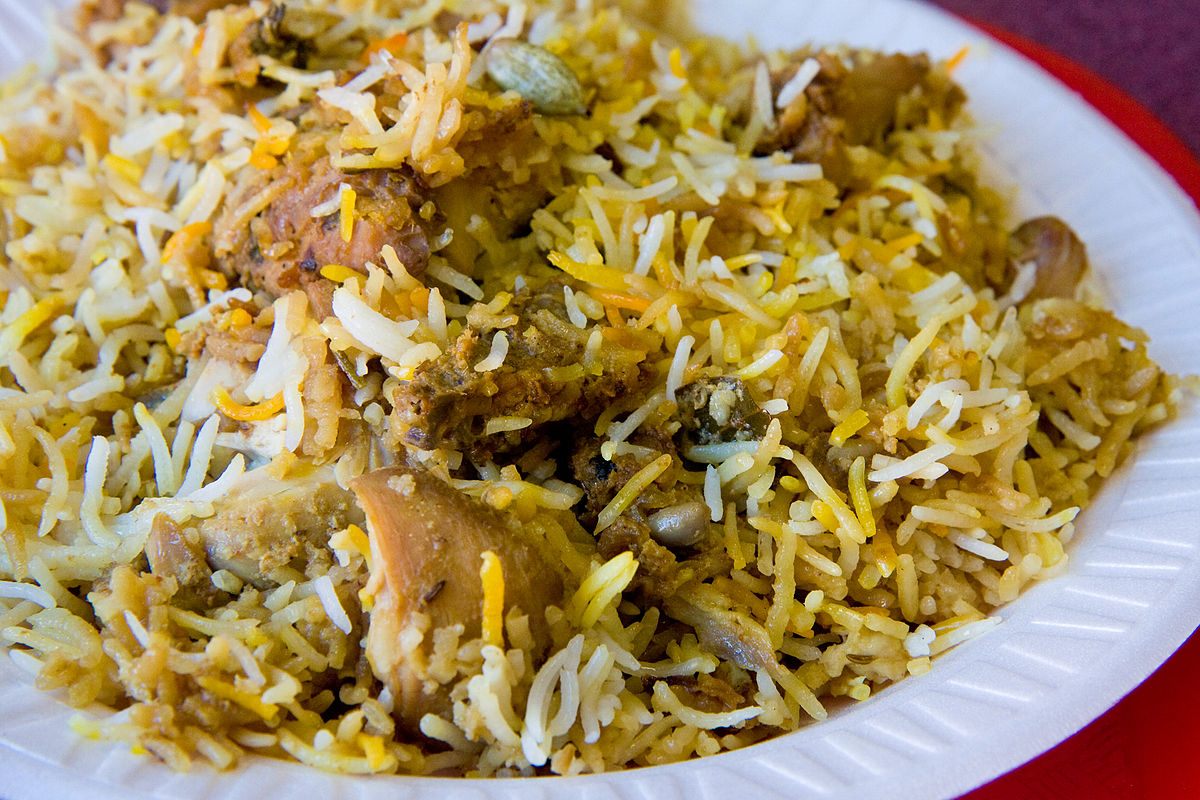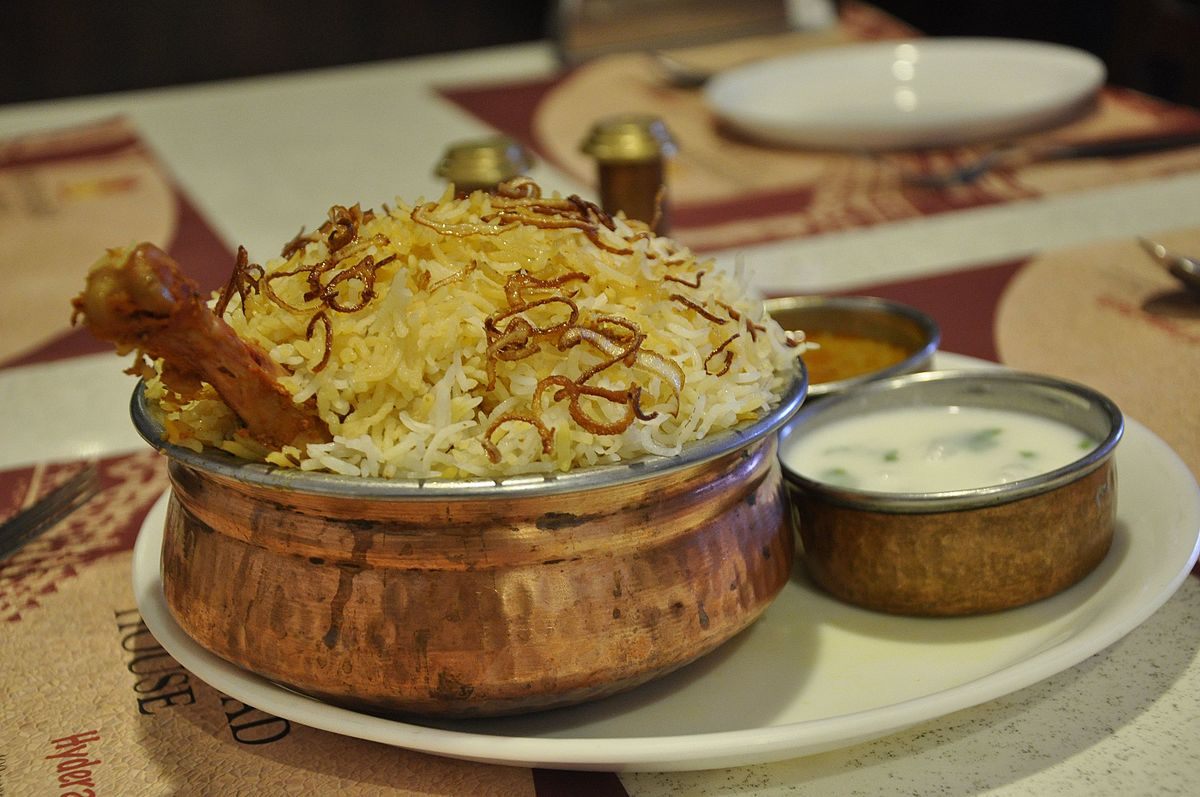Biryani is Better Than Americans Know
The authentic version is South Asia’s best kept secret.

Hyderabadi chicken biryani, a fragrant mix of rice, spices and meat. (Photo: Garrett Ziegler/CC BY 2.0)
Within the Indian subcontinent, the spiced rice and meat dish known as biryani is not just a delicious dinner. It’s a multinational phenomenon, an ever-growing set of memes, and the focus of a culinary cult.
Indian, Pakistani and Bangladeshi households spend hours, sometimes days, cooking biryani on the most special occasions. Restaurants in every corner of India dedicate themselves to specializing in only biryani. In early 2015, Buzzfeed India published an article entitled “23 Reasons Having Biryani Is Better Than Having A Boyfriend,” urging its readers to “stop chasing after a bae and get yourself a baeryani.”
For all its popularity in South Asia, however, biryani fever has not gone beyond the subcontinent, to places where Indian food is otherwise extremely prevalent—such as the United States. Sure, plenty of Indian restaurants outside India will have it on the menu, but few count their biryani preparations among the most popular dishes or as their claim to fame. While dishes such as naan and samosas have enjoyed great success in foreign cultures, one of the most celebrated dishes in India remains relatively anonymous overseas.
What makes biryani so popular in India, and why didn’t its popularity translate beyond its borders? How is biryani India’s best kept secret?

Biryani is a warming, spicy dish that is typically served with raita to cool the taste buds down. (Photo: Dheerajk88/CC BY-SA 4.0)
To figure out why the biryani phenomenon is exclusive to the subcontinent, we have to get to the bottom of what makes biryani so addictively delicious in the first place. The answer lies in part with the nature of the dish: biryani is fragrant, spiced rice that has been parboiled and then cooked with meat, usually chicken or goat. The rice gets its robust flavor from a variety of spices, including ginger, garlic, nutmeg, cardamom, cinnamon, saffron and rosewater, as well as from the meat itself.
Quora user Ananvita Bhattacharya boils biryani’s popularity down to three reasons: it’s incredibly flavorful; it acts as a complete meal in itself, and its versatility means it can appeal to a wide range of ages and palates.
Although biryani is widespread across the subcontinent today, it had much more exclusive origins. While mentions of “mutton rice” or Oon Soru in Tamil literature go as far back as 348 BCE, the term “biryani” and the closest predecessor to its modern incarnation seems to originate around India’s Mughal era. According to Pratiba Khan in her cookbook simply titled, Biryani, the dish is thought to have been brought over from Persia by the Muslim conquerors who settled and ruled India, and the word is said to come from the Persian word for rice, birinj. Its expensive, hard-to-come-by ingredients meant that biryani was a dish for the kings.

Arabian camel meat biryani. (Photo: Miansari66/CC0)
The fact that biryani was a dish for kings and princes might explain why, outside of the subcontinent and select Islamic countries, it doesn’t taste quite right. Biryani contains pricey saffron; the higher the quality of the saffron used, the better the biryani turns out. Restaurants that don’t specialize in biryani may use saffron too sparingly, or even fake saffron to cut costs.
Another factor is speed. The dish was prepared for royal banquets, often over the course of several days of slow cooking. Since that wouldn’t make sense on the turnover that most restaurants have (unless they specialize in biryani), biryani recipes are either cut down to have faster cooking times, or the dish made in batches and left out for a few days. The end product, as a result, tastes not quite like the original dish as it is meant to be.

Biryani from Chennai. (Photo: Rupamdas75/CC BY-SA 4.0)
The biggest factor in why biryani tastes inauthentic outside of its home countries, however, is to do with the protection of the sacred family biryani recipe. “The reason biryani is such a closely-kept secret in families is because it is a recipe that has been perfected over time,” says Aima Khan, a Pakistani-American whose family’s biryani recipe has been in her family for around three generations.
Khan’s family received the recipe from an elderly cook in her grandfather’s hometown. The cook’s biryani recipe had quite the reputation, but he didn’t have his own family to pass it down to, as was tradition. Since he was good friends with Khan’s grandfather, on her grandparents’ wedding day, he decided to part with his cherished recipe. “He felt that the best way for him to leave some sort of legacy was to pass down his famous recipe,” explains Khan.
Biryani recipes are a point of pride, often used to bolster a family reputation. “The best way to make a good impression is to serve an amazing biryani,” says Khan. Weddings are an especially good time for this. “In a way, biryani is used as the sort of trademark of a family. And who doesn’t want to be represented in the best way possible?”

Biryani from Lucknow. (Photo: Fatimahope/CC BY-SA 4.0)
Each family recipe differs slightly from the next in terms of ingredients, and families take pride in the differences and particularities of their recipes. “Each of these ingredients, believe it or not, say a little something about the family that [the recipe] came from,” says Khan. “This is why it’s very difficult for families to share their recipes, because they need to be able to trust that the next family will be able to make the dish just as well, if not better than the one that is sharing the recipe.”
Families guard their recipes closely, for fear of the fact that they will be altered or incorrectly prepared by others. “There’s nothing more heart-wrenching than to watch your cherished family recipe be ruined by someone who does not appreciate the dish enough to prepare it properly,” says Khan.
Of course, there are plenty of resources out there offering up “authentic” biryani recipes, such as cookbooks packed with regional recipes, and more recently, reddit threads claiming to reveal users’ family recipes. But for now, India holds onto its best kept secret for a little longer.
Gastro Obscura covers the world’s most wondrous food and drink.
Sign up for our regular newsletter.
























Follow us on Twitter to get the latest on the world's hidden wonders.
Like us on Facebook to get the latest on the world's hidden wonders.
Follow us on Twitter Like us on Facebook